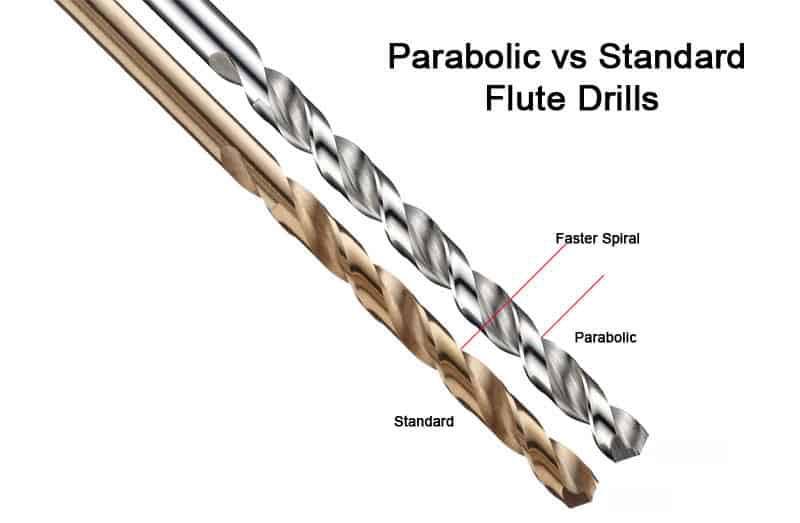Blog
Recent Posts
Drilling ferrous and non-ferrous metals
Posted by on
The performance of the drill bits depends on their design, composition and the type of material they will drill. Several factors will determine which is the most suitable drill bits according to the material, be it steel, copper, zinc, aluminum, brass, etc. This is mainly due to the characteristics that ferrous metals have, unlike non-ferrous ones.
Properties of Ferrous and Non-Ferrous Metals
Ferrous Metals
Ferrous Metals are those that contain iron. These include stainless steel, high carbon, high-speed steels and cast iron steels. Ferrous metals generally have higher tensile strength than non-ferrous metals. This feature makes them an excellent choice for construction materials, either structural or design. They are also used in industrial applications such as containers, tools and appliances. Tooling designers must take into account the hardness and tenacity of the materials when deciding which drill bit they’ll use.

Non-Ferrous Metals
Non-Ferrous metals, especially copper, lead, zinc, and brass, also occupying certain niches in the construction and manufacturing industries. They are excellent for applications where there will be moisture that would oxidize ferrous metals. They are also more malleable, conductive and can be manipulated easier in different ways. They are not magnetized so they are useful for electrical components.

The following variants are used by manufacturers of drill bits to adapt them to the different hardness and properties of the work materials:
POINT ANGLE:
The drill bit point can be altered to have more precise holes (better entry, better centered and higher quality). The 118° point angle is used as the standard angle because it adapts relatively well on most applications. This points can be used with most soft steels and non-ferrous metals. The 135° point drill bits can be used to those materials in addition to harder steels. On those harder steels, the 135° point has an advantage of being able to work with less pressure during the feed and also helping the drill bit to more easily center it.
Non-ferrous metals can be worked with greater speed and the risk of breakage is much lower. The chip of the material comes out as a spring or strings unlike small chips on the harder metals. For this, wider grooves are required to keep these longer debris from sticking. The point of the bits has a greater angle that facilitates the cutting of the drill.

FLUTES:
Flutes have two main purposes: 1) To remove the cut material (chips) out of the hole. 2) Allow oil/coolant to flow through the whole body of the drill bit and cool down the tool. The type of material to drill will help us determine the width and form of the flutes. Hard ferrous metals can be drilled with bits at lower speeds than what you would use with non-ferrous metals. The spiral of the flute tends to be slower since the chips are not as flexible. Also, the slower spiral, allows for greater rigidity at the tip of the drill forming a stronger angle. The result of this is that we have a smaller ship that manages to evacuate more easily.
Non-ferrous metals can be worked with greater speed and the risk of breakage is much lower. The chip of the material comes out as a spring or strings unlike small chips on the harder metals. For this, wider grooves are required to keep these longer debris from sticking. The point of the bits has a greater angle that facilitates the cutting of the drill.

CONSTRUCTION:
Harder cutting material, the harder drill bit material needed. Carbon steel doesn’t work for drilling in metals. To cut metal no matter how soft it is, one of the following is required: High Speed Steel (H.S.S.), Carbide Tip or Solid Carbide. H.S.S. is widely used due to its low cost and cutting performance on soft metals such as copper, zinc, aluminum and other non-ferrous carbon steel. By using an alloy of HSS and 5 to 8% of cobalt, you’ll have a longer lasting edge that’ll help the tool last longer. This alloy is useful for tempered steel, cast iron and some titanium alloys.
To increase the speed and wear resistance significantly, carbide drills are required. They tolerate very high temperatures and are excellent for high volume applications in stainless steel or other hard alloy parts.
For a more economical solution to solid carbide, you can use HSS drill bits with a carbide tip and they will be effective for us in non-ferrous metals and other abrasive materials.

Why do carbide end mills break or wear out?
Why do carbide end mills break or wear out?When speaking with most our customers, they request to solve one or two problems with their end mills. They either break the cutting edge on their tool or the edge wears out prematurely.Up next we’ll show you 8 causes of this 2 problems and their possible solutions.Breakage:Wear:
High Speed Steel vs Carbide
Just like High Speed Steel replaced Carbon Steel, Carbide is now being used more and more for end mills and drill bits. Even so, HSS blades and drill bits are used in certain important niches for metal cutting applications. There are many ways to make HSS cutting tools efficient and economical without sacrificing cutting speeds, [...]
Do you want to extend the life of your end mills?
The premature wear of your end mills is an added cost to your company but also it affects your productivity. Any talk of milling should start with the feed and speed of cut. This two variables are going to define what’s next.Feed & Cutting SpeedWith the feeding & cutting speeds, we determine the chip-break. For [...]
Need an alternative to your current end mill?
There are many reasons why we need to get carbide end mills similar to the once we currently use. Some times our main supplier runs out of stock and we haven’t been able to find the exact same tool with another distributor. Other times we are pressured to reduce cost on our consumables and we want to search for an [...]
Optimum cutting tools for Aluminum
We commonly assume that when cutting aluminum we can use any cutting tool as it is an easy material to cut. This statement is not entirely incorrect, although if one is aware of the costs of production we could consider some premises when choosing the tool.Aluminum parts manufacturers know how important it is to have the correct style of cutters, taking [...]
 Loading... Please wait...
Loading... Please wait...
